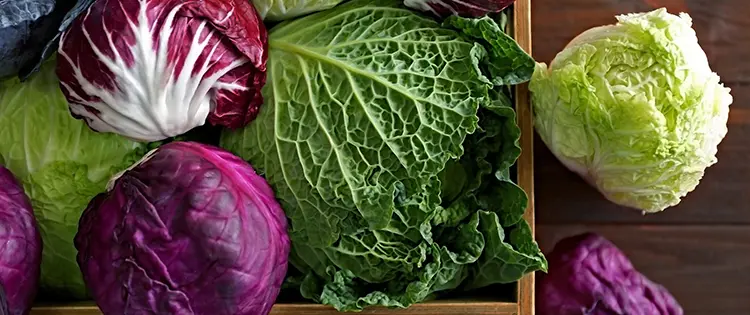A simple growth process, delicious, and packed full of vitamins and nutrients, cabbages are one of the most popular vegetables to grow. There is no shortage of choice when it comes to this vegetable. They come in a variety of shapes, sizes, and colors. You can eat them hot, cold, or anything in between, if you want to know more about this delicious veggie, keep reading.
Types of Cabbage
Even if there are over 400 different varieties of cabbage, these are the most known:
Green Cabbage: Green cabbage is the type that most of us are familiar with. You can use it for stir-frys, slaws, salads, or you can cook it.
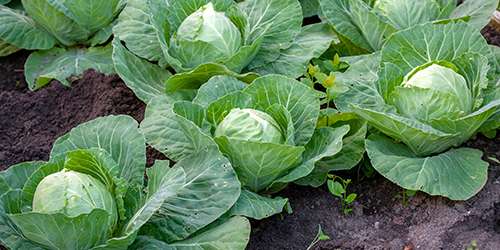
Red Cabbage: It’s called ‘red cabbage’ but it’s actually magenta. It’s exactly the same as green cabbage but it’s slightly smaller. It tastes great pickled, cooked, slowed or served with fish.
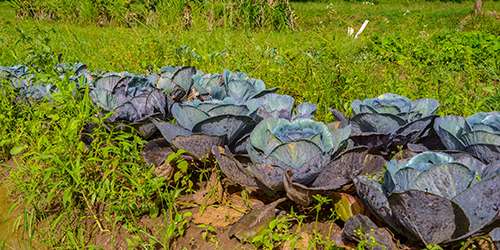
Savoy Cabbage: Also known as ‘curly cabbage’, because that’s exactly what it is – curly. It’s just as delicious as any other cabbage but more visually appealing. It has lacy, ruffled, deeply ridged leaves which makes it stand out. It is tender, so you’ll need to be gentle with it. Savoy cabbage works well in a fresh crunchy wrap.
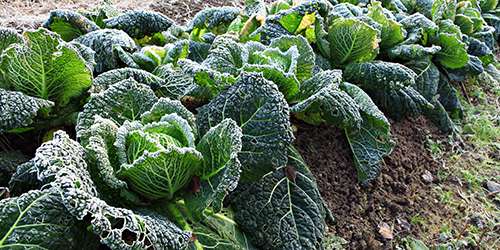
How to Grow Cabbage
As a cool-weather crop, cabbage must be grown during the spring months so that it is ready for harvesting before the summer. Additionally, you can start growing cabbage at the end of summer so that you can harvest it during autumn, winter, or early spring. Here are the steps you will need to take to grow cabbage:
- Grow rich, organic, well-drained soil matter.
- Get the planting beds ready by adding 2 to 3 inches of commercial organic planting mix, or aged compost, make sure that it is turned under 12 inches.
- The soil pH should be between 6.5 and 6.8/
- To make the cabbage leafier, add a cottonseed meal or nitrogen-rich blood meal to the soil before planting.
- The best temperature for planting cabbage is between 45 and 75 degrees F.
- 4-6 weeks before the final spring frost, plant cabbage seeds indoors.
- When they have grown 3-4 inches in height, transfer cabbages to the garden.
- Cabbage is ready to harvest between 80 to 180 days after planting from seed, and 60 to 105 days after they’ve been transplanted.
- Sow cabbage seeds 1 inch apart and ½ an inch deep.
- The soil should be kept moist, but don’t overwater it.
- Water cabbages with 1 to 1 ½ inch of water per week.
- Use a high nitrogen-based fertilizer every two weeks at midseason.
Plants to Grow Near Your Cabbages
One of the best ways to keep your cabbage plants healthy is by companion planting. Here are some of the best plants to grow near your cabbages:
Rosemary and Sage: These herbs will help keep cabbage moths away from your plants.
Chamomile: If you want to enhance your cabbage flavor, plant it next to chamomile.
Yarrow Root: Plant some clumps around the edges of your garden, it will improve soil quality and get rid of unwanted insects.
Marigolds: Plant some marigolds around the base of your cabbage plants. They will repel pests such as cabbage moths and aphids.
Celery, Beets, Onions: These crops will repel insects and improve the flavor of your cabbages.
Plants to Keep Away From Your Cabbages
There are also some plants you will need to keep away from your cabbages if you want them to grow properly. These include the following:
Pole Beans/Mustard Plants/Grapes
Do not plant pole beans, mustard plants, or grapes near cabbages because they will compete for the nutrients in the soil and attract harmful insects.
Insects That Are Good For Your Cabbages
Parasitic wasps lay eggs on insects that are harmful to cabbages. After the eggs hatch, they will kill the insect. You can purchase parasitic wasps as a starter community.
Insects That Are Harmful To Your Cabbages
Insects such as cabbage moths and cabbage worms are the most common cabbage pests. If given the chance, these bugs will completely destroy your plants. Once you notice them, you will need to work quickly to get rid of these pests before it’s too late. You can use a biological insecticide-free from toxins to get rid of moths and worms. This will ensure that the beneficial insects are left unharmed. Neem oil also works well to repel harmful insects without harming the beneficial ones.
Classic Cabbage Recipes
You can use cabbage to make many delicious meals, here are some of the most popular:
Cabbage Soup
Get most of your nutrients for the day with a bowl of this low-fat, healthy cabbage soup. It’s finger-licking good on its own or served with a portion of crusty bread. 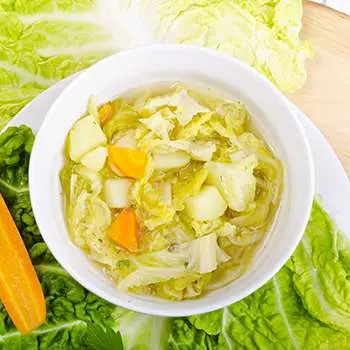
Preparation Time: 20 minutes
Cooking Time: 50 minutes
Serves: 6 servings
Ingredients
- 1 can of chickpeas
- 7 liters of hot vegetable stock
- 1 can of chopped tomatoes
- 1 tablespoon of finely chopped rosemary
- 1 teaspoon of sweet smoked paprika
- 2 cloves of crushed garlic
- 1 large shredded savoy cabbage
- 70 grams of diced, smoked pancetta
- 1 large finely chopped carrot
- 2 finely chopped celery sticks
- 1 finely chopped large onion
- 2 tablespoons of olive oil
- Salt and pepper
- Crusty bread to serve
Directions
- Add the oil to a casserole pot and heat it at a low temperature.
- Add the carrot, celery, and onion and fry until the vegetables start to soften.
- Add the pancetta, increase the temperature and fry until it turns golden brown.
- Add the cabbage, and fry for another 5 minutes.
- Add the rosemary, paprika, and garlic and cook for another 1 minute.
- Add the stock and tomatoes and leave the ingredients to simmer for 30 minutes without a lid.
- Add the chickpeas, season with salt and pepper.
- Spoon the soup into bowls and serve alone or with crusty bread.
Bubble and Squeak
As old as this recipe is, it never grows old! It’s the perfect way to use leftover cabbage, sprouts, and mash. 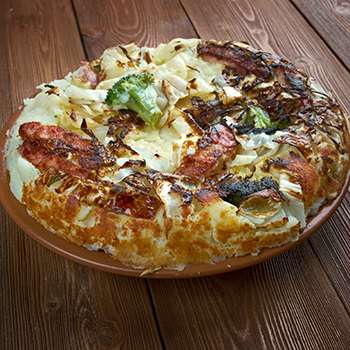
Preparation Time: 10 minutes
Cooking Time: 20 minutes
Serves: 4 servings
Ingredients
- 400 grams of leftover mashed potatoes
- 15-20 cooked Brussel sprouts
- 5 cups of leftover cabbage
- 1 clove of chopped garlic
- 1 finely sliced onion
- 4 rashers of chopped streaked bacon
- 1 tablespoon of butter
Directions
- Add the butter to a non-stick frying pan and heat it at a low temperature.
- Add the bacon and stir to combine.
- When the bacon starts browning, add the garlic and onion and stir to combine.
- Add the Brussels sprouts, and cabbage and cook for 5-6 minutes.
- Add the mashed potatoes and stir to combine.
- Flatten the ingredients out in the pan. Leave it to brown slightly.
- Turn the ingredients over and leave it to brown slightly.
- Slice into wedges and serve.
Cabbage Rolls Middle Eastern Style
This delightful vegan dish is a must-have on your repertoire.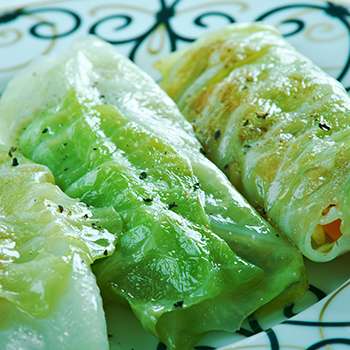
Preparation Time: 20 minutes
Cooking Time: 1 hour
Serves: 4 servings
Ingredients For the Rolls
- 1 clove of finely grated garlic
- 2 tablespoons of tahini
- 4 tablespoons of chopped mint
- 1 lemon juiced and zested
- 1 can of green drained lentils
- 1 ½ teaspoon of cinnamon
- 1 tablespoon of ground coriander
- 1 tablespoon of ground cumin
- 40 grams of pine nuts
- 2 finely chopped large onions
- 1 tablespoon of rapeseed oil
- 16 large savoy cabbage leaves, trimmed stems
Ingredients For the Salad
- 1 tablespoon of chopped mint
- 12 sliced and pitted Kalamata olives
- ½ a sliced cucumber
- 6 tomatoes, sliced
Directions
- Boil some water in a large saucepan, add the cabbage leaves and place a heavy spoon on top of them to keep them under water. After 4 minutes, remove the saucepan from the cooker and drain the water into a bowl and keep it to one side.
- Heat the oil in a frying pan, add the onions and fry until golden.
- Add the pine nuts and cook until they start changing color.
- Add the rice and spices and 450ml of the water used to cook the cabbage.
- Add the bouillon powder, stir and cook for 15 minutes until the liquid is absorbed and the rice becomes tender.
- Add the mint, zest, and lentils and stir to combine.
- Prepare the oven by heating it to 350 degrees F.
- Arrange the cabbage leaves on a plate, add one spoonful of rice to each leaf, and roll.
- Add the cabbage rolls to a shallow casserole dish and bake for 30 minutes.
- In a small bowl, combine the garlic, lemon juice, tahini, and 3 tablespoons of lemon juice.
- In a separate bowl, combine the salad ingredients and toss them with the salad dressing.
- Serve the cabbage rolls with the salad on the side.
Final Thoughts
Once you get started growing these, you won’t be able to stop! Not only are they easy to grow, but they are also delicious to eat. With this vegetable in your fridge, you’ll never run out of healthy and tasty meals to cook.
You may also like:
What Happens If You Smoke Garlic (Video)
Foods You Should Never Buy And Always Make At Home
DIY Solar Oven From A Pizza Box

